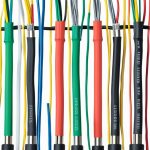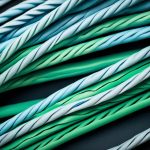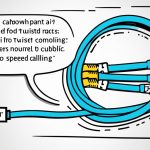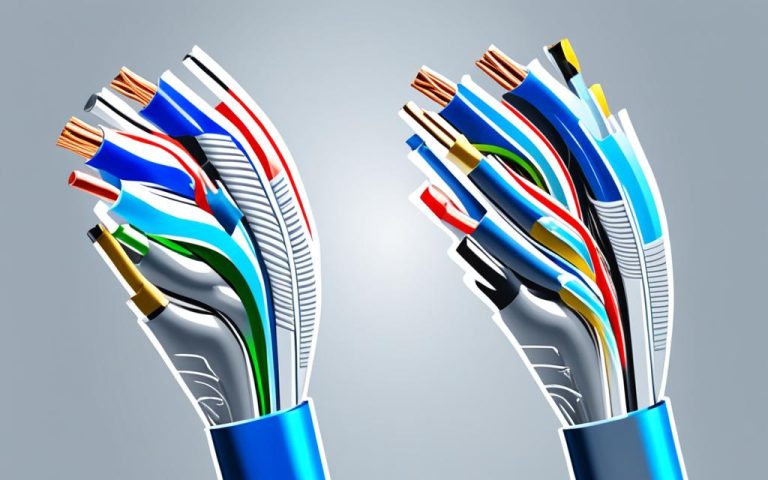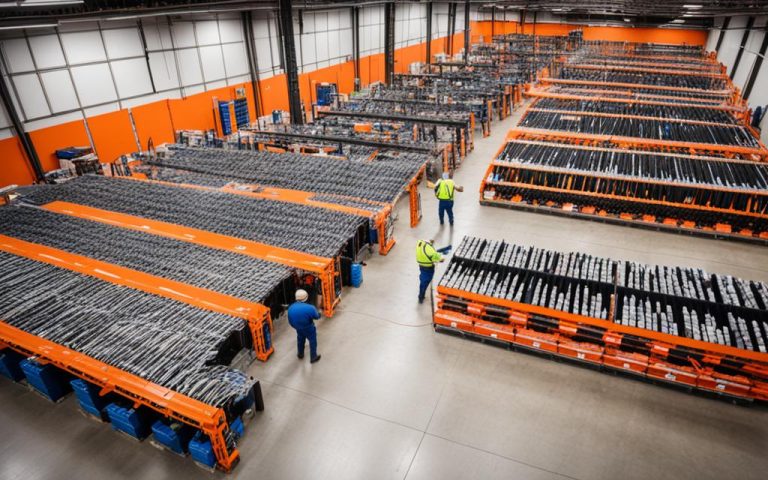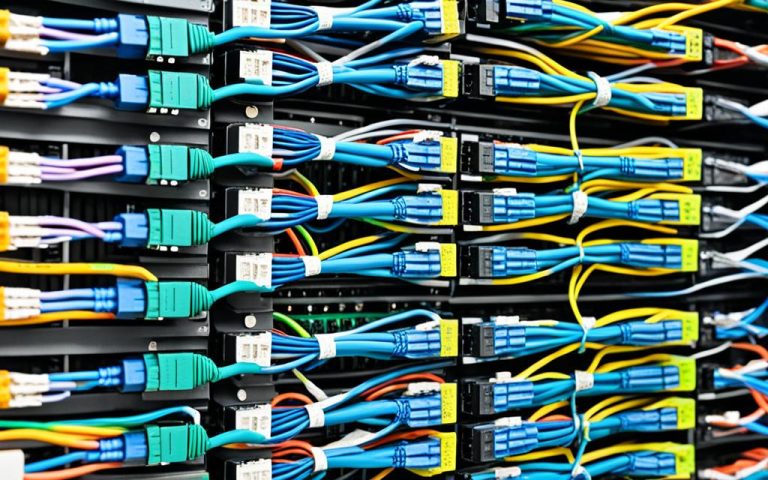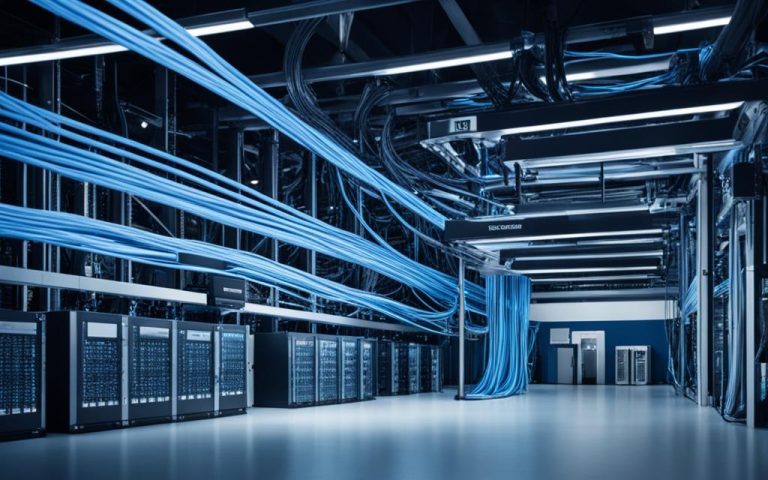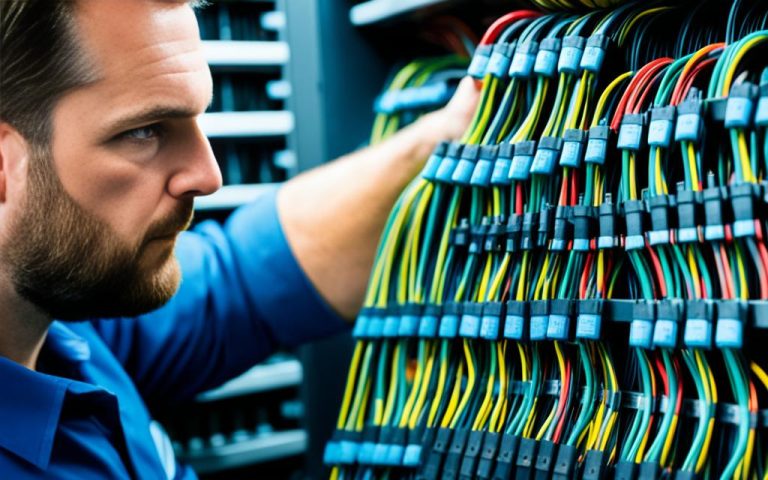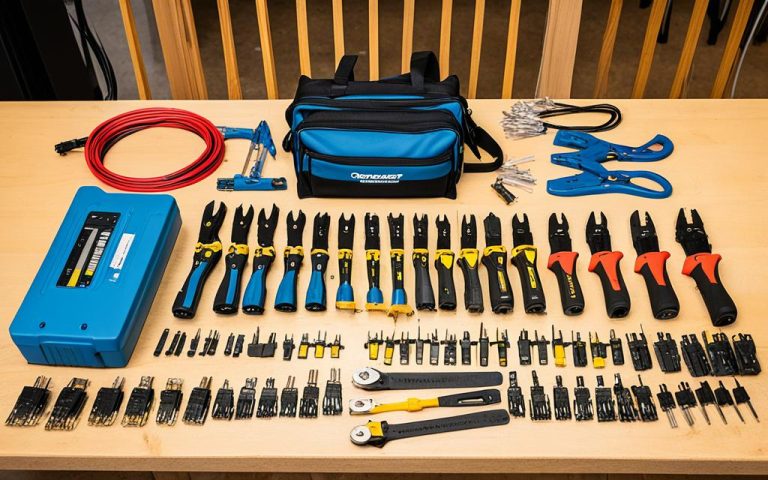Video surveillance systems play a crucial role in enhancing security for various premises, from homes to businesses and public spaces. To ensure the effectiveness and reliability of these systems, the choice of security camera cables is of utmost importance. One type of cable that stands out for its robustness and versatility is the twisted pair cable.
Twisted pair cables are widely used in video surveillance systems to connect IP cameras and transmit both video and power. They offer several advantages, making them an ideal choice for building reliable security systems.
When it comes to security camera cables, there are different options available, including network ethernet cables and coaxial cables. Network ethernet cables, often used in Ethernet over Coax systems, transmit video data over an internet connection. On the other hand, coaxial cables transmit unprocessed video signals. However, twisted pair cables, especially ethernet cables, offer superior performance and reliability.
One of the key advantages of using twisted pair cables, such as ethernet cables, is their compatibility with IP cameras. These cables provide fast, reliable connections that are less prone to dropouts compared to wireless connections. Twisted pair cables are thin, flexible, and easy to install, making them suitable for various installation scenarios.
Furthermore, twisted pair cables offer versatility, as they are widely available and compatible with different devices and systems. Whether you are setting up a small home surveillance system or a large-scale commercial security network, twisted pair cables can meet your requirements.
When the distance between cameras and the control center exceeds the limitations of twisted pair cables, fiber-optic cabling can be a cost-effective alternative. Fiber-optic cables have superior transmission features and can transmit data over longer distances without signal deterioration. However, to power IP cameras over these cables, Power over Ethernet (PoE) standards are commonly used.
In conclusion, when building video surveillance systems, choosing the right security camera cables is essential. Twisted pair cables, such as ethernet cables, provide a reliable and efficient connection for IP cameras, ensuring smooth transmission of both video and power. By opting for twisted pair cables, you can build robust security systems that enhance the safety and protection of your premises.
Types of Security Camera Cables and Connectors
In order to build an effective video surveillance system, it is important to understand the various types of security camera cables and connectors available. This knowledge will help you make informed decisions when selecting the right components for your system. Two commonly used cables for security cameras are Ethernet cables and coaxial cables.
Ethernet Cables:
Ethernet cables are primarily used with IP cameras. These cables not only transmit video data but can also provide power to certain cameras through a technology known as Power over Ethernet (PoE). This eliminates the need for separate power cables, streamlining installation and reducing cable clutter.
Ethernet cables use RJ45 connectors, which are designed to securely connect the cable to the camera and other network devices. The RJ45 connector is widely compatible and commonly used in networking applications, making it easy to integrate IP cameras into existing network infrastructures.
Coaxial Cables:
Coaxial cables are typically used with analog security cameras. These cables transmit unprocessed video signals from the camera to the recording or monitoring device. Unlike Ethernet cables, coaxial cables do not carry power, so a separate power cable is required to supply power to the camera.
There are different connectors used to make security camera connections, depending on the type of cable being used. Some commonly used connectors include:
- F connectors
- BNC connectors
- TNC and N-type connectors
- RCA connectors
- DC connectors
Siamese Cables:
Sometimes, it may be necessary to install both coaxial and power cables for an analog security camera. Siamese cables solve this issue by combining a coaxial cable and a power cable in a single casing. This simplifies installation and reduces the number of cables required.
Video Balun:
For those who want to connect analog cameras using an Ethernet cable, a video balun can be used. A video balun is a device that converts the analog video signal from a camera into a digital signal that can be transmitted over an Ethernet cable. It allows analog cameras to take advantage of the benefits offered by Ethernet cables, such as longer transmission distances and compatibility with PoE.
Benefits of Ethernet Cables and Coaxial Cables
Both Ethernet cables and coaxial cables have their advantages and are suitable for different types of security camera systems. Ethernet cables provide fast and reliable data transmission, are compatible with PoE technology, and offer easy integration into existing network infrastructure. On the other hand, coaxial cables are commonly used for analog cameras and are cost-effective for shorter transmission distances.
Next, let’s take a closer look at the advantages of using twisted pair cables, particularly Ethernet cables, for video surveillance systems.
https://www.youtube.com/watch?v=qnn0ku18hmE
| Security Camera Cable Type | Usage |
|---|---|
| Ethernet Cables | Used with IP cameras and compatible with Power over Ethernet (PoE) technology |
| Coaxial Cables | Commonly used for analog security cameras |
| Siamese Cables | Combine coaxial and power cables in a single casing, suitable for analog cameras |
| Video Balun | Allows analog cameras to use Ethernet cables for longer transmission distances and PoE compatibility |
Advantages of Using Twisted Pair Cables for Video Surveillance
Using twisted pair cables, especially Ethernet cables, for video surveillance systems offers several advantages. These cables provide fast and reliable Ethernet connections, ensuring a stable and secure connection for your surveillance system. With their thin and flexible design, twisted pair cables are easy to install, making them suitable for various installation scenarios. Their versatility and wide availability make them a convenient choice for video surveillance systems.
Here are key advantages of using twisted pair cables:
- Fast and Reliable Ethernet Connections: Ethernet cables offer faster data transmission compared to wireless connections, ensuring a reliable connection for your video surveillance system.
- Thin and Flexible Cables: Twisted pair cables have a slim profile and flexible construction, allowing for easy installation in tight spaces, along walls, or in cable trays.
- Versatility: Twisted pair cables are compatible with various devices and equipment, making them suitable for different video surveillance setups.
- Reliable Connection: Twisted pair cables provide a stable and reliable connection between your IP cameras, recorders, and other security equipment, reducing the risk of signal loss or interference.
By choosing twisted pair cables for your video surveillance system, you can ensure a robust and dependable connection, enabling effective monitoring and enhanced security.
| Advantages of Using Twisted Pair Cables for Video Surveillance |
|---|
| Fast and reliable Ethernet connections |
| Thin and flexible cables |
| Versatility |
| Reliable connection |
Using twisted pair cables, especially Ethernet cables, for video surveillance systems offers several advantages. These cables provide fast and reliable Ethernet connections, ensuring a stable and secure connection for your surveillance system. With their thin and flexible design, twisted pair cables are easy to install, making them suitable for various installation scenarios. Their versatility and wide availability make them a convenient choice for video surveillance systems.
By choosing twisted pair cables for your video surveillance system, you can ensure a robust and dependable connection, enabling effective monitoring and enhanced security.
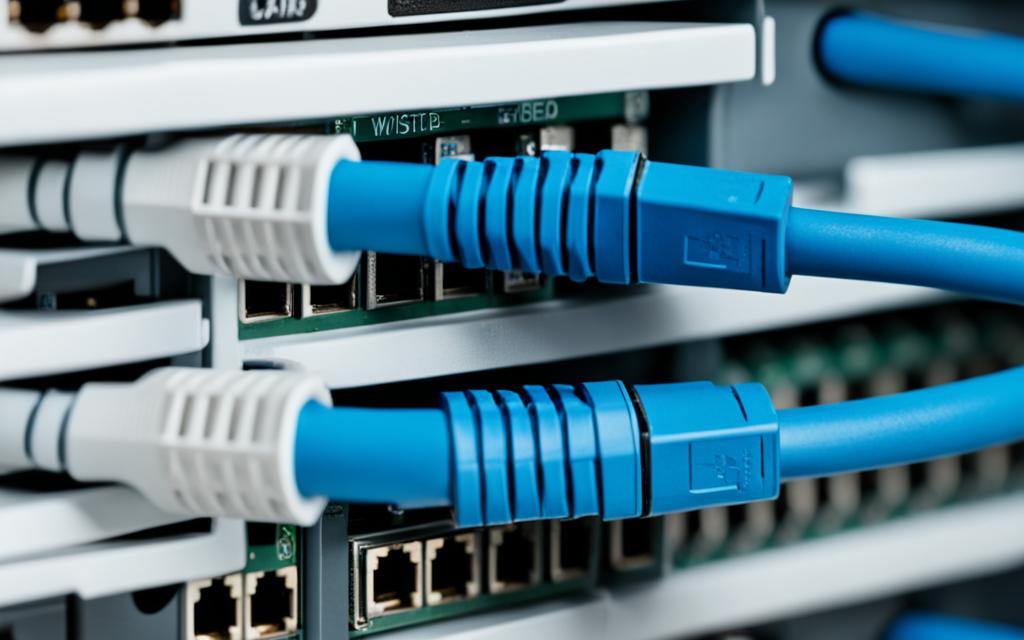
Extending Video Surveillance Networks with Twisted Pair Cables
In some cases, the distance between cameras and the control center or recording unit may exceed the limitations of twisted pair cables. In such situations, fiber-optic cabling can be a more cost-efficient alternative. Fiber-optic cables have superior transmission features and can transmit data over longer distances without signal deterioration.
“Fiber-optic cables provide high-speed and secure data transmission, making them ideal for extending video surveillance networks.”
However, transmitting power through fiber-optic cables is not possible, so power over Ethernet (PoE) standards are commonly used to power IP cameras over twisted pair cables. PoE standards allow both power and data to be transmitted through the same Ethernet cable, eliminating the need for separate power cables.
Additionally, there are specialty transmission equipment available, such as fiber transmitters and network RF transmitters, that can extend the distance of video surveillance networks. These devices enhance the signal strength and quality, ensuring reliable and uninterrupted transmission.
To better understand the advantages of fiber-optic cabling and power over Ethernet, let’s compare the two options in a table:
| Fiber-Optic Cabling | Power over Ethernet (PoE) |
|---|---|
| Superior transmission quality | Simultaneous power and data transmission |
| Longer transmission distances | Cost-effective solution |
| No signal deterioration | Compatible with twisted pair cables |
Conclusion
Twisted pair cables are the cornerstone of robust video surveillance systems. They offer a reliable and efficient connection for IP cameras, transmitting both video and power. With a wide range of security camera cables and connectors available, choosing the most compatible option for your video security system is crucial.
When the distance between cameras and the control center exceeds the limitations of twisted pair cables, consider fiber-optic cabling as a cost-effective alternative. Fiber-optic cables provide superior transmission features, allowing data to be transmitted over longer distances without signal deterioration. To power IP cameras over twisted pair cables, Power over Ethernet (PoE) standards are commonly used.
By selecting the appropriate cables and connectors, you can ensure the effectiveness and reliability of your video surveillance system. This not only enhances security but also protects your premises. Trust in the power of twisted pair cables to provide the robustness and stability that video surveillance systems demand.
FAQ
What are twisted pair cables used for in video surveillance systems?
Twisted pair cables are crucial for the effectiveness of video surveillance systems as they are used to connect IP cameras and transmit video and power.
What are the different types of security camera cables?
The different types of security camera cables include network ethernet cables and coaxial cables.
What types of cables do IP cameras use?
IP cameras use ethernet cables, which can also power certain cameras through Power over Ethernet (PoE) technology.
What are siamese cables?
Siamese cables combine a coaxial cable and a power cable in one casing.
What connectors are commonly used for security camera connections?
Connectors commonly used for security camera connections include F connectors, BNC connectors, TNC and N-type connectors, RCA connectors, and DC connectors.
What type of connectors do ethernet cables use?
Ethernet cables use RJ45 connectors, which can be adapted for analog cameras using a video balun.
What are the advantages of using twisted pair cables for video surveillance?
Using twisted pair cables, especially ethernet cables, for video surveillance systems offers advantages such as fast and reliable ethernet connections, resistance to dropouts, thin and flexible cables, and easy installation.
What is a cost-effective alternative to twisted pair cables for longer distances?
Fiber-optic cabling can be a more cost-efficient alternative to twisted pair cables for longer distances as it has superior transmission features and can transmit data without signal deterioration.
Can power be transmitted through fiber-optic cables?
No, power cannot be transmitted through fiber-optic cables. Power over Ethernet (PoE) standards are commonly used to power IP cameras over twisted pair cables.
What specialty transmission equipment is available to extend the distance of video surveillance networks?
Specialty transmission equipment such as fiber transmitters and network RF transmitters are available to extend the distance of video surveillance networks.


